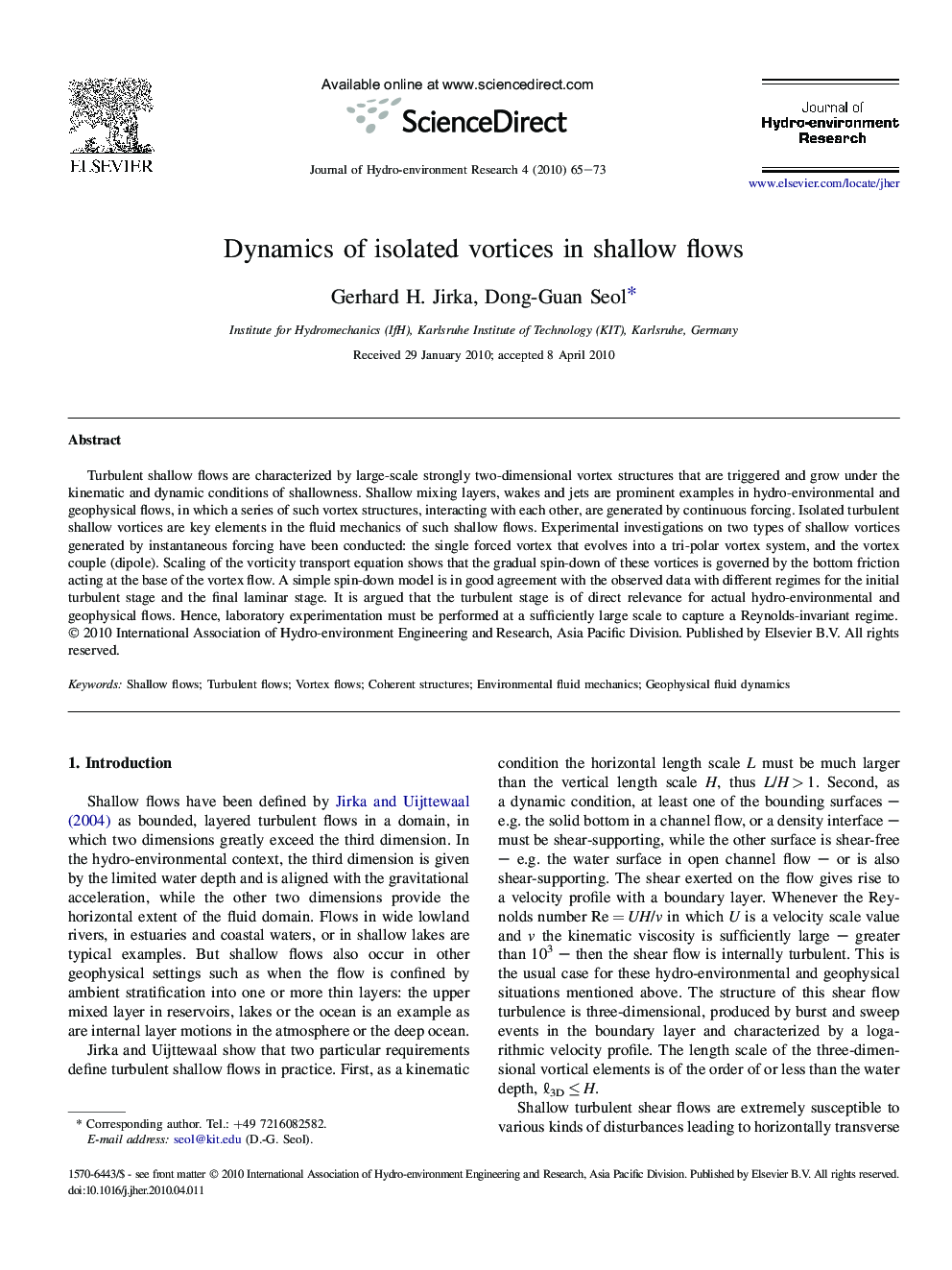| Article ID | Journal | Published Year | Pages | File Type |
|---|---|---|---|---|
| 4493887 | Journal of Hydro-environment Research | 2010 | 9 Pages |
Turbulent shallow flows are characterized by large-scale strongly two-dimensional vortex structures that are triggered and grow under the kinematic and dynamic conditions of shallowness. Shallow mixing layers, wakes and jets are prominent examples in hydro-environmental and geophysical flows, in which a series of such vortex structures, interacting with each other, are generated by continuous forcing. Isolated turbulent shallow vortices are key elements in the fluid mechanics of such shallow flows. Experimental investigations on two types of shallow vortices generated by instantaneous forcing have been conducted: the single forced vortex that evolves into a tri-polar vortex system, and the vortex couple (dipole). Scaling of the vorticity transport equation shows that the gradual spin-down of these vortices is governed by the bottom friction acting at the base of the vortex flow. A simple spin-down model is in good agreement with the observed data with different regimes for the initial turbulent stage and the final laminar stage. It is argued that the turbulent stage is of direct relevance for actual hydro-environmental and geophysical flows. Hence, laboratory experimentation must be performed at a sufficiently large scale to capture a Reynolds-invariant regime.
